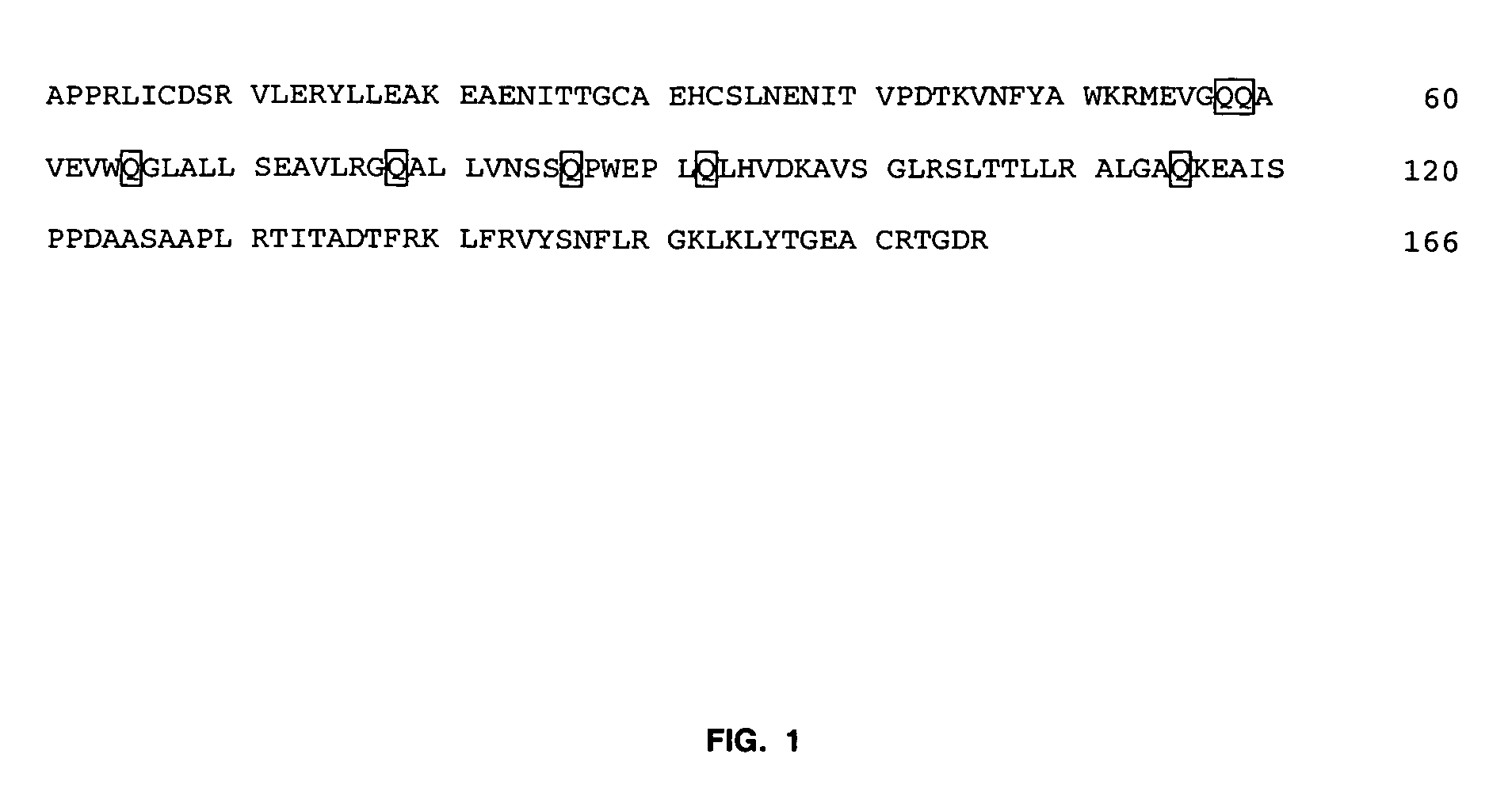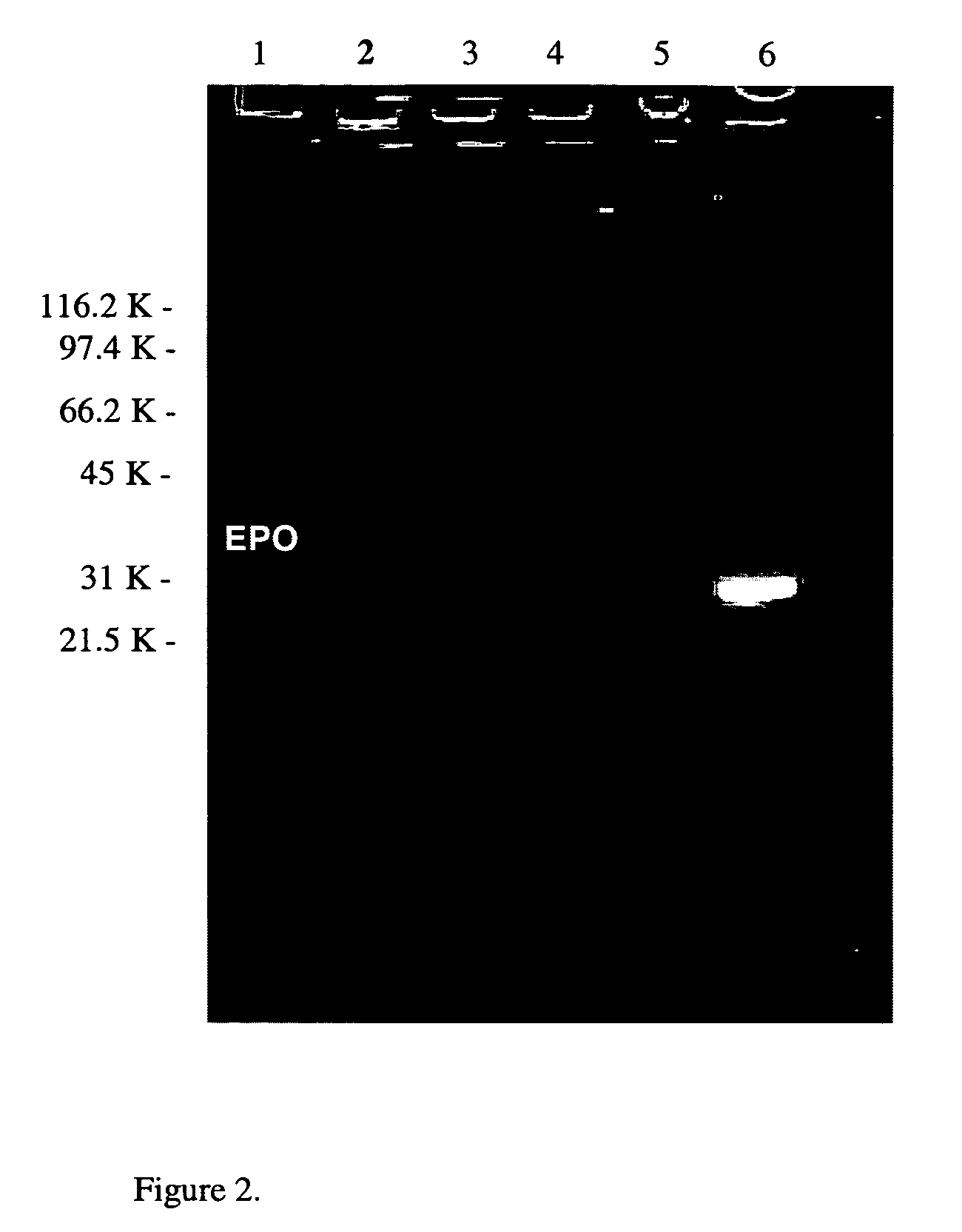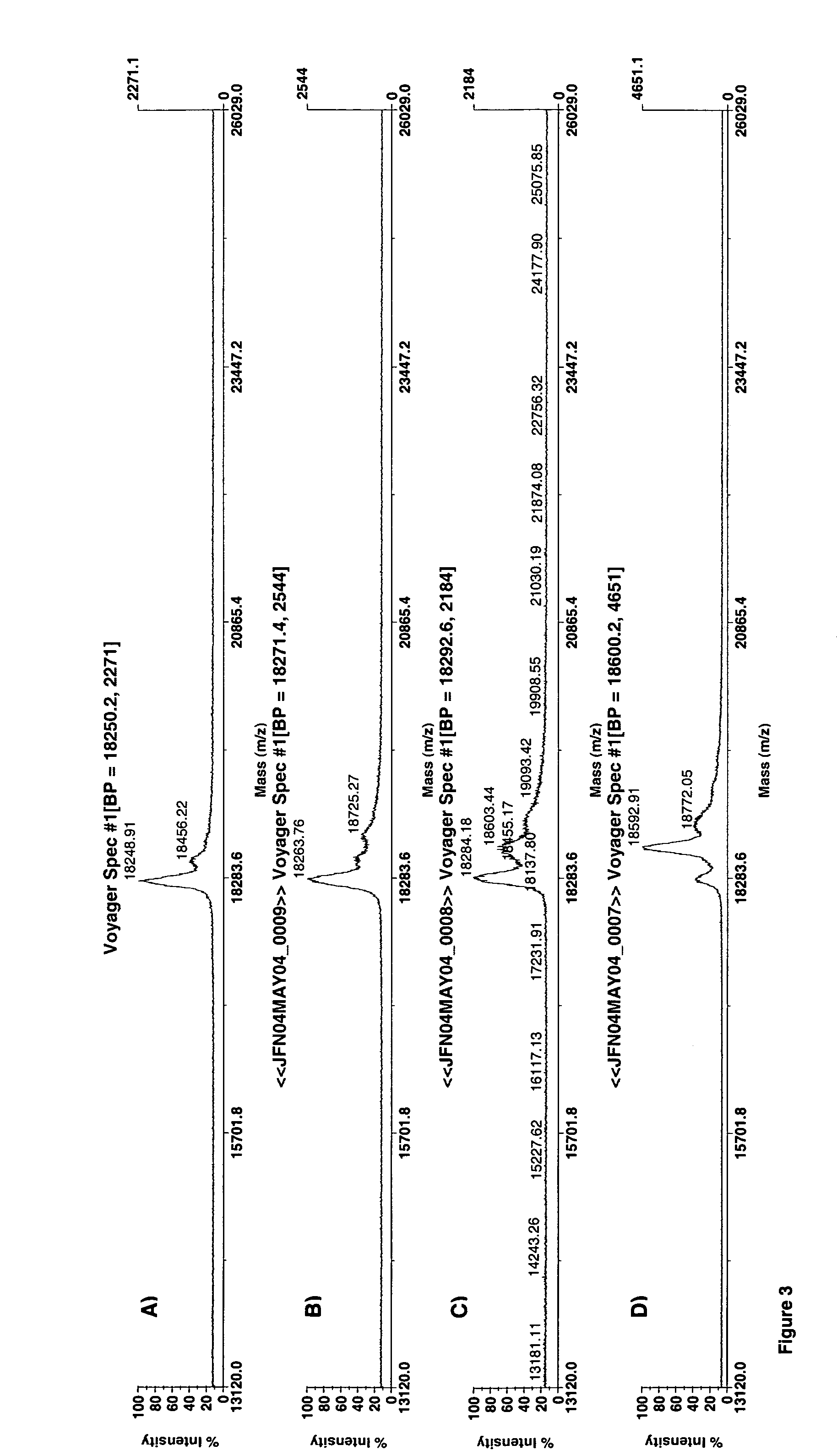Formation of novel erythropoietin conjugates using transglutaminase
- Summary
- Abstract
- Description
- Claims
- Application Information
AI Technical Summary
Benefits of technology
Problems solved by technology
Method used
Image
Examples
example 1
Conjugation of Dansyl-Cadaverine Substrate to Human Erythropoietin with Guinea Pig Liver Transglutaminase
[0073]Recombinant human EPO (rhEPO) (10 uM) was incubated with dansyl-cadaverine (DC) (Sigma, St Louis, Mo.) (3 mM) and TGase (Sigma, St Louis, Mo.) (0.15 U / ml) in 100 mM Tris (pH 7.5) and 10 mM CaCl2 for 3 hours at 37° C. Dansyl-cadaverine is a well known substrate for TGases and provides a fluorescent marker for ease of following the reaction. The reaction mixture was subjected to SDS-PAGE and the results shown in FIG. 2. The fluorescence of the EPO band confirms the attachment of DC via TGase and indicates that amine-acceptor sites exist on EPO. The product was purified on a Zorbax GF-250 XL HPLC column equilibrated with PBS.
[0074]The presence of fluorescent dimers and trimers in the gel indicates that EPO can itself act as a TGase substrate by providing a lysine substrate for cross-linking with one or more of the glutamine residues in EPO. The fact that these bands are fluore...
example 2
Conjugation of Cadaverine-X-biotin Substrate to Human Erythropoietin with Guinea Pig Liver Transglutaminase
[0075]Recombinant human EPO (rhEPO) (50–100 uM) is incubated with cadaverine-X-biotin (Biotium, Hayward, Calif.) (30 mM) and TGase (Sigma, St Louis, Mo.) (0.15 U / ml) in 100 mM Tris (pH 7.5) and 10 mM CaCl2 for 3 hours at 37° C. The product is purified on a Zorbax GF-250 XL HPLC column equilibrated with PBS.
example 3
Conjugation of Cbz-QG Substrate to Human Erythropoietin with Guinea Pig Liver Transglutaminase
[0076]Recombinant human EPO (rhEPO) (1.96 mg / ml) is incubated with N-α-benzyloxycarbonyl glutaminyl glycine (Cbz-QG) (15 mM) (Sigma, St Louis, Mo.) and TGase (Sigma, St Louis, Mo.) (0.15 U / ml) in 100 mM Tris (pH 7.5) and 10 mM CaCl2 for 3 hours at 37° C. The product is purified on a Zorbax GF-250 XL HPLC column equilibrated with PBS.
PUM
| Property | Measurement | Unit |
|---|---|---|
| Mass | aaaaa | aaaaa |
| Mass | aaaaa | aaaaa |
| Mass | aaaaa | aaaaa |
Abstract
Description
Claims
Application Information
 Login to View More
Login to View More - R&D
- Intellectual Property
- Life Sciences
- Materials
- Tech Scout
- Unparalleled Data Quality
- Higher Quality Content
- 60% Fewer Hallucinations
Browse by: Latest US Patents, China's latest patents, Technical Efficacy Thesaurus, Application Domain, Technology Topic, Popular Technical Reports.
© 2025 PatSnap. All rights reserved.Legal|Privacy policy|Modern Slavery Act Transparency Statement|Sitemap|About US| Contact US: help@patsnap.com



